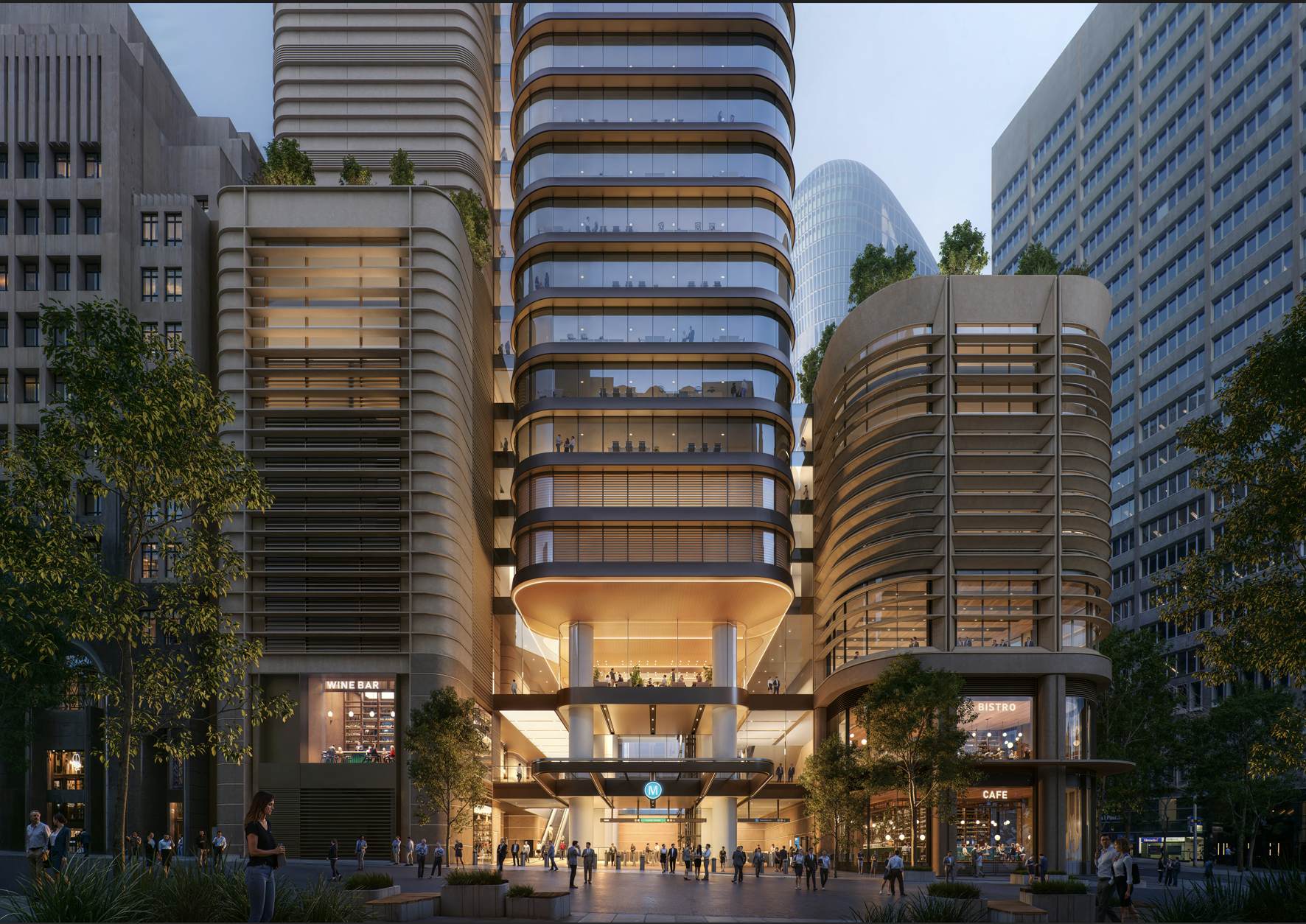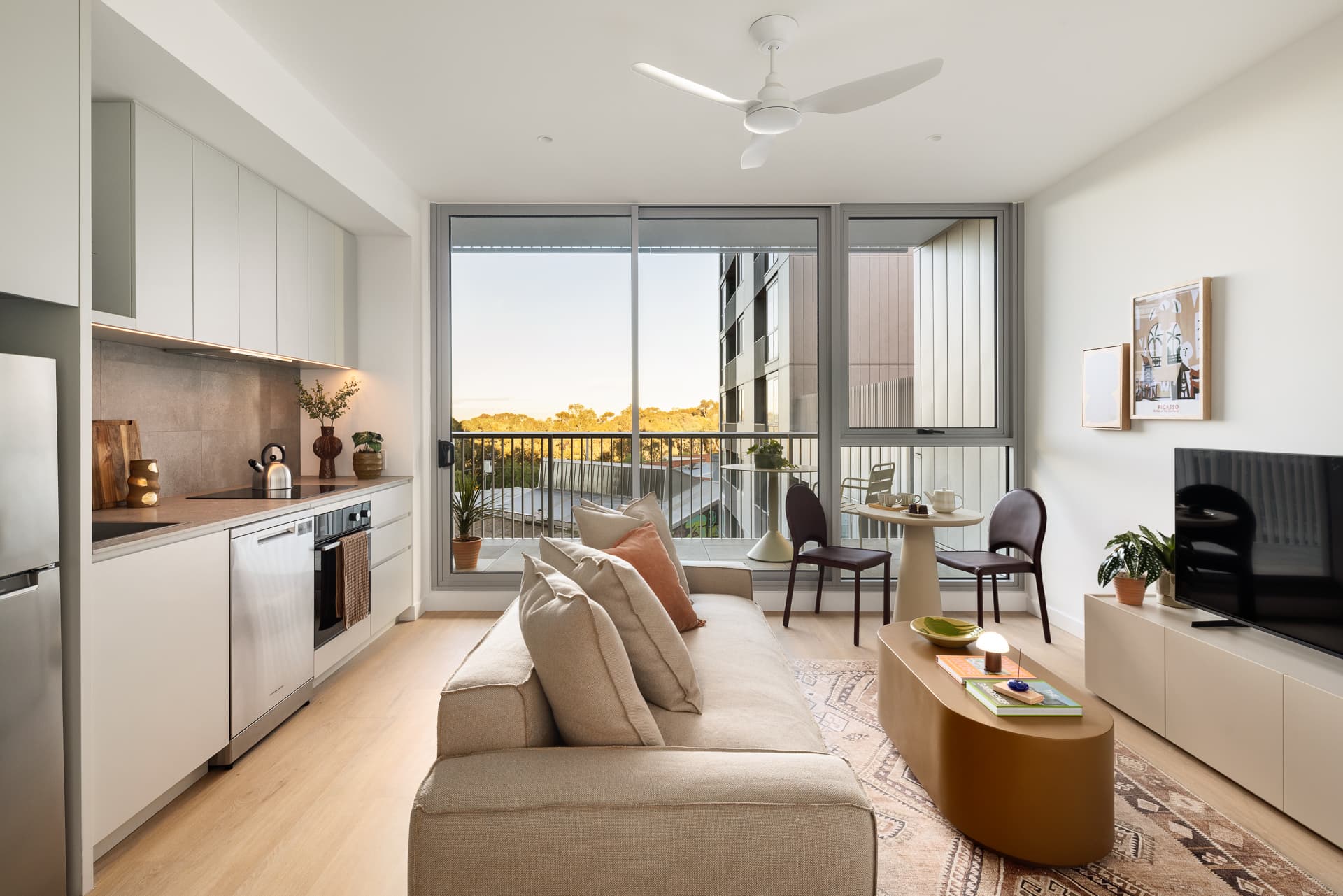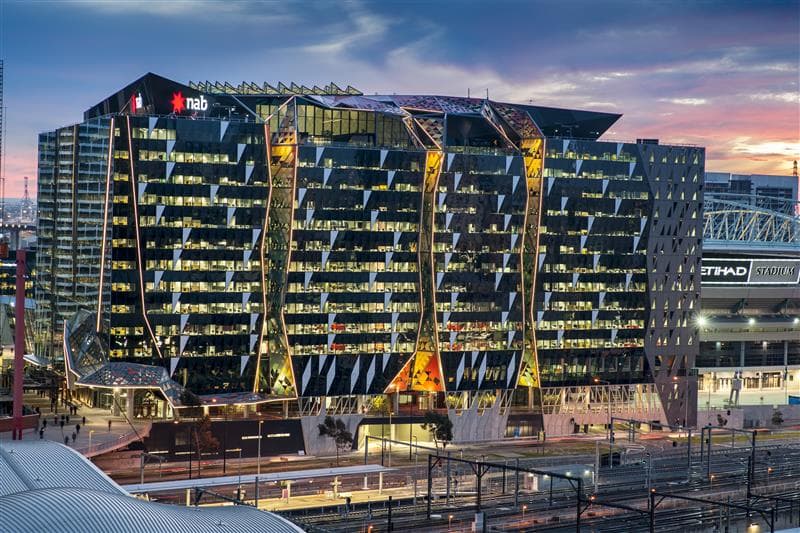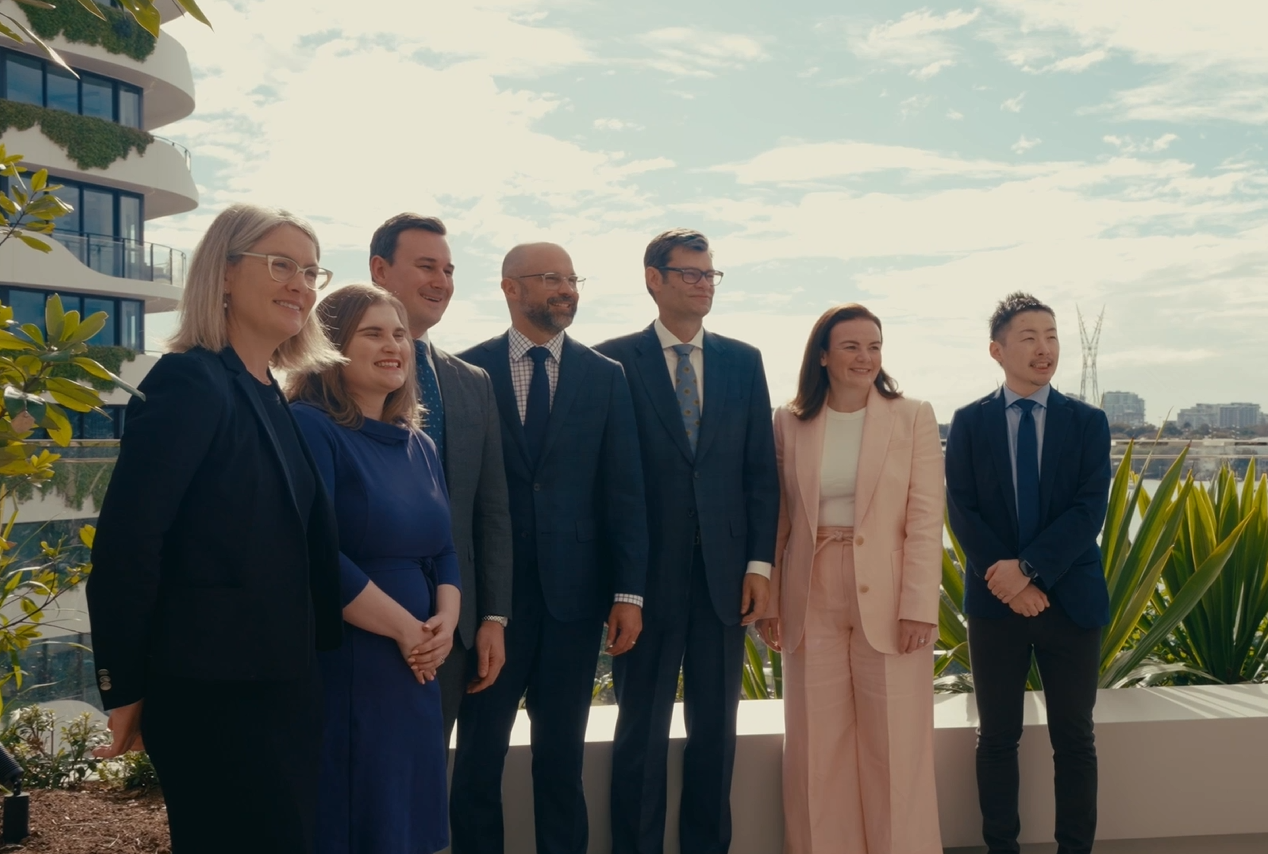The role of art in placemaking and development
Great public art, accessible to people from all walks of life, is an important contribution to our urban landscape and is invaluable in the development of unique places.
Great public art, accessible to people from all walks of life, is an important contribution to our urban landscape and is invaluable in the development of unique places.
Art has a multitude of uses and roles in placemaking. It creates inviting, interesting and engaging experiences; it shapes the character of a place; it can communicate the history of a site and raise awareness of important issues; it fosters collaboration with communities and gives them voice in the identity of a precinct; it can be used to temporarily activate a space and can solve practical design challenges.
As the creator and steward of urban precincts, Mirvac’s role is to deliver more than just buildings. We see our precincts as a series of connective and cohesive experiences that have people at the heart. As we move into 2021, the role of art in creating these unique experiences is more powerful than ever.
Historically, art has played a significant role in placemaking, from Jeff Koons’ “Puppy” in Bilbao, Spain to the Charging Bull on Wall Street, New York. In Australia, art drives iconic contemporary cultural events like Sculpture by Sea and VIVID, and it is estimated that the economic contribution to Australia’s GDP from cultural and creative activity exceeds $111 billion .
At Mirvac, we use art to push the boundaries of traditional development. Working with local and international artists to help evolve a place, beyond just a workplace, building or retail centre to something truly memorable. We want to surprise and delight visitors of our precincts, encourage people to stay and dwell, inspire creativity, and spark inquiry, ideas and connection to the places we create.
Some recent examples from across our portfolio include:
Celebrating a site - South Eveleigh – For over 100 years, Sydney’s South Eveleigh site (formerly the Australian Technology Park) has been a centre for technology, innovation, and collaboration. Now headquarters to Commonwealth Bank of Australia (CBA), Mirvac, with its partners, had a vision to create a destination that welcomes, celebrates, and enriches the lives of our communities and inspires innovation; art was central to this. We partnered with the site’s neighbour Carriageworks to curate a precinct-wide art strategy for the site, which celebrates the unique history of the site, showcases its indigenous heritage, and encourages the wider community to explore. There are four installations at South Eveleigh: Nell’s Eveleigh Treehouse and Happy Rain artwork, Jonathan Jones’ Untitled red gum slabs, and Chris Fox’s Interchange Pavilion installation, each uniquely tells a segment of South Eveleigh’s story. The most recent installation is Chris Fox’s Interchange Pavilion. Inspired by the iconic geometries of the meeting points between two train tracks, it creates an extraordinary focal point for the Village Square and an amphitheatre for future events, informal gatherings and will become a place of respite for visitors and workers to enjoy the outdoors.
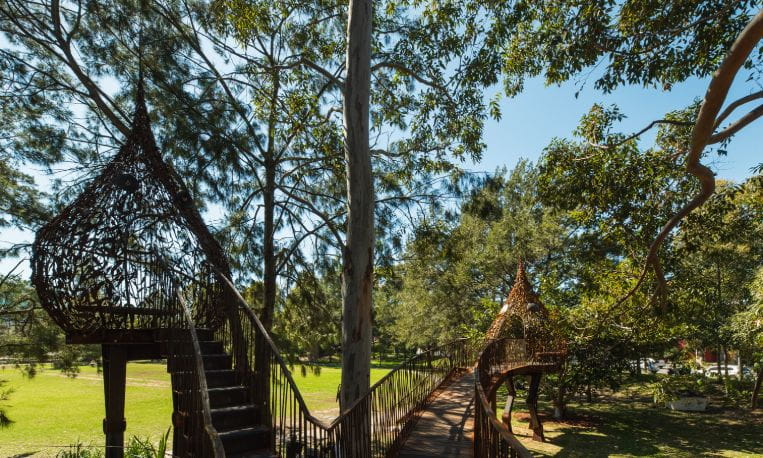
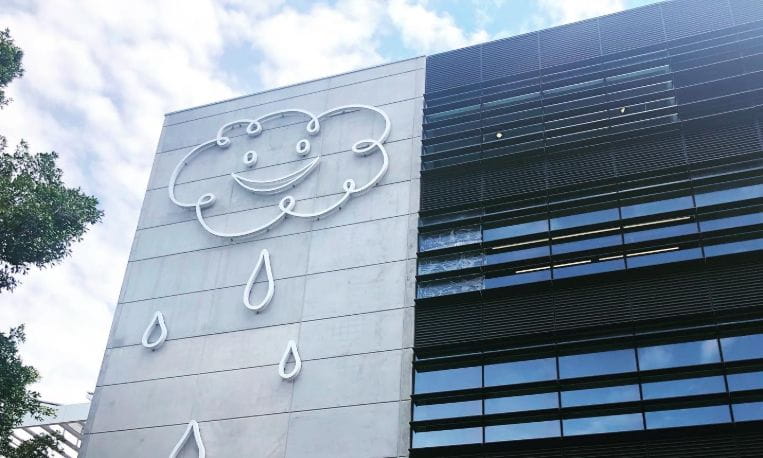
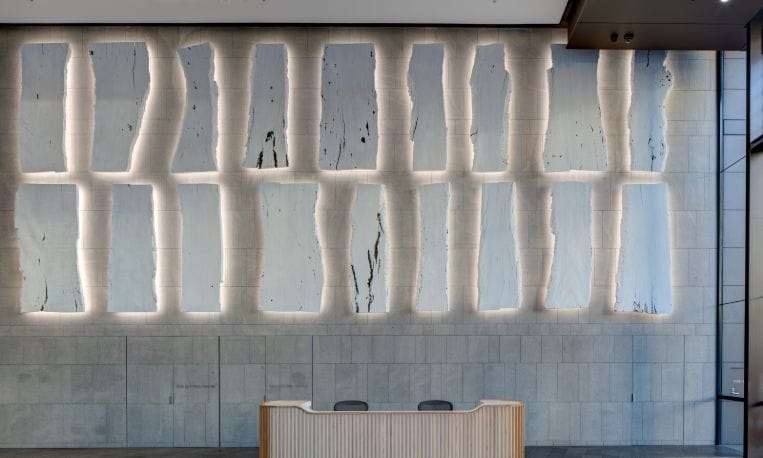
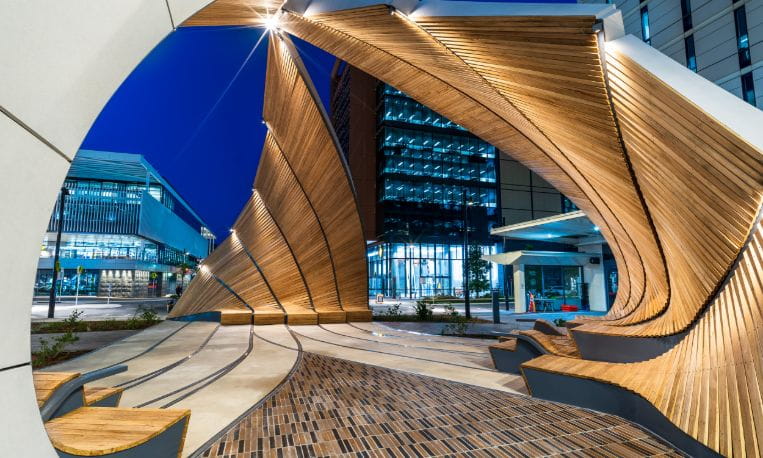
Connecting to the land – LIV Indigo – A new mural from two upcoming Western Sydney artists, Jade Jackson and Dr John Hunter, helps the residents of Mirvac’s LIV Indigo Build-to-Rent community in Sydney’s Olympic Park connect with the site’s history and appreciate the cultural heritage of their community space. The mural comprises three sections, each four metres long, which adorn the lobby at the LIV Indigo apartments and were inspired by the artists’ conversations with LIV residents. The conversations focussed on what the residents love about their homes and the Olympic Park area, resulting in a mural which shows how the land connects the traditional custodians and the present community, and everyone in between. The residents are also represented physically in the mural by their handprints and some paw prints too. A lasting symbol of their connection to this place they call home.

Activating a space - Olderfleet – Our Olderfleet development in Melbourne, anchored by Deloitte, uniquely integrates a modern commercial tower with one of Melbourne’s most important pieces of heritage architecture, the Olderfleet buildings. Solar is the sculptural centrepiece of the lobby and is a unique artwork created by award-winning UK artist, Wolfgang Buttress, following an international design competition. Buttress’ approach to sculpture is to frame nature so people can experience it more intimately. Weighing 4.5 tonnes and suspended 10 metres above ground, the Solar installation is a site-specific piece that responds in real-time to the sun and connects the building to its surrounding environment. As the sun shifts throughout the day, the artwork’s lighting elements create an immersive, multi-sensory experience.
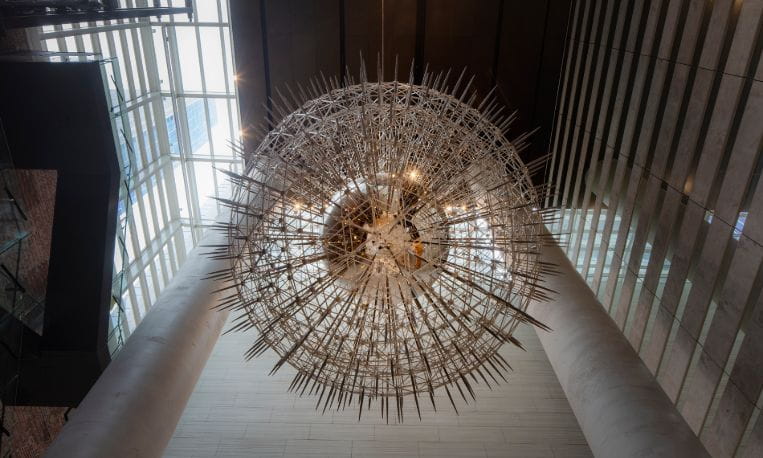
Showcasing culture – 8 Chifley Square – A unique touch for 8 Chifley is the I Stay (Ngaya ngalawa) installation, leveraging universal themes to spotlight Indigenous culture and history. Created by renowned American artist Jenny Holzer, the artwork features songs, poems, stories, autobiography, and other texts by Aboriginal Australians and Torres Straight Islanders. The text plays in myriad animated effects on an electronic display fitted to a four-sided, 19-metre steel column. Using low-emission LED lights, Holzer's unending artistic messages ascend the steel girders at plaza level, adding another layer of public engagement with the building.
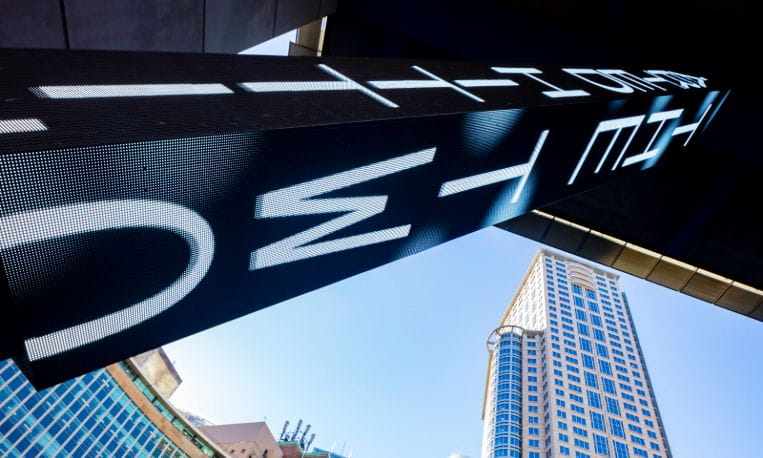
Engaging the community – Toombul Shopping Centre – Mirvac’s Toombul Shopping Centre partnered with the Brisbane Street Art Festival to celebrate artistic talent in all its forms. Toombul gave over its prominent and intimate locations to a plethora of acclaimed local, national, and international street artists for Australia’s biggest street art festival program. Audiences witnessed ten artworks being created live, including one of the largest of the festival, a 53m x 10m mural completed by UK artist Wasp Elder on the rooftop. The activation also engaged the community through a program of live music, panel discussions, exhibitions, restaurant launches, and artistic workshops for the community. Inspired by the strong engagement, Mirvac invited local artist and festival participant Claire Matthews to create a permanent installation in the carpark entry that celebrates sustainability and renewable energy.
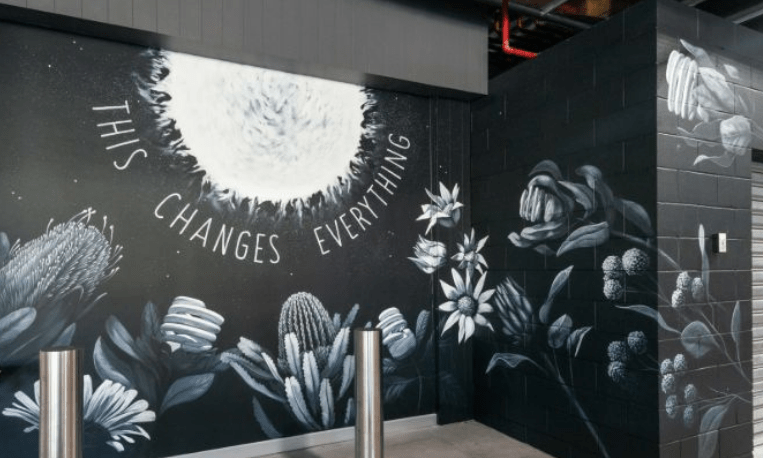
Engagement at different stages of construction - 80 Ann Street Brisbane – As part of the 2020 Brisbane Street Art Festival, Mirvac partnered with festival organiser, Vast Yonder, to activate the building’s hoarding through large-scale immersive and interactive street artworks. Engaging four up-and-coming artists, Mirvac commissioned pieces that were inspired by the history of the site, which was previously the old Brisbane Fruit and Produce Exchange, and invited the public, including local school groups, to engage with the artists, while exploring and learning about the 80 Ann Street development.
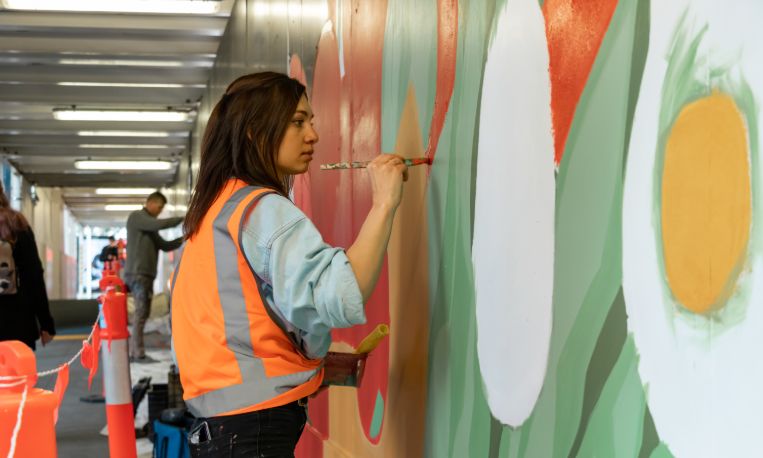
Communicating history – 200 George Street – The diverse display of public art at EY Centre, 200 George Street is designed to celebrate the history and heritage of the site and carve out a unique identity for the precinct. The NGARUNGA NANGAMA lobby artwork, a 300 square metre masterpiece from well-known Indigenous artist, Judy Watson, is the most prominent public art piece. NGARUNGA NANGAMA, which means Calm Water Dream, is crafted from sandstone excavated from beneath the building during construction and celebrates the heritage of the area, reflecting the pre-settlement Sydney shoreline. Early maps of the area are carved into the sandstone and overlaid with imagery including water, text, and objects from the excavation of the site. Of an evening, the artwork’s watery light effects are also a reference to the Tank Stream that once ran parallel with George Street. The new building straddles the banks of the Tank Stream at first settlement, and the water references also pay tribute to the two water wells which were discovered in the basement of the building during their demolition.
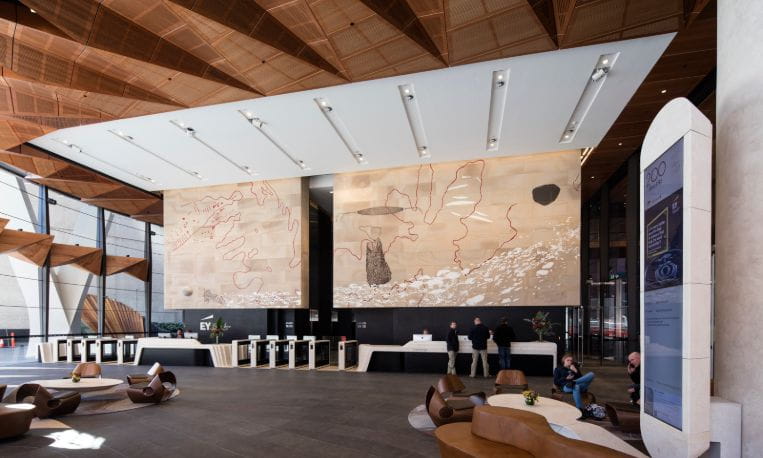
A sculptural façade – 2 Riverside Quay - The sculptural artwork façade for Riverside Quay solved the practical design challenge presented by an unattractive carpark block, visible from many aspects in the precinct. The work, a bold and dynamic graphic design spanning seamlessly around the carpark exterior, activates the surrounding urban landscape as the façade flickers and warps from different vantages. The concept design also reflects the history of the Southbank site by engaging with Birrarung Marr, the original title of the Yarra River given by the Woiwurung and Bunurong communities meaning “River of Mists”. The life-source, flow, and ephemeral nature of the river embraced by these Indigenous communities can be seen in the undulating patterns of the façade, at once solid, yet ever moving with the orientation of its inhabitants. This perpetual movement created by the façade forms a sense of weightlessness and transience over the carpark exterior, much like a mist obscuring the surrounding environment of the river.
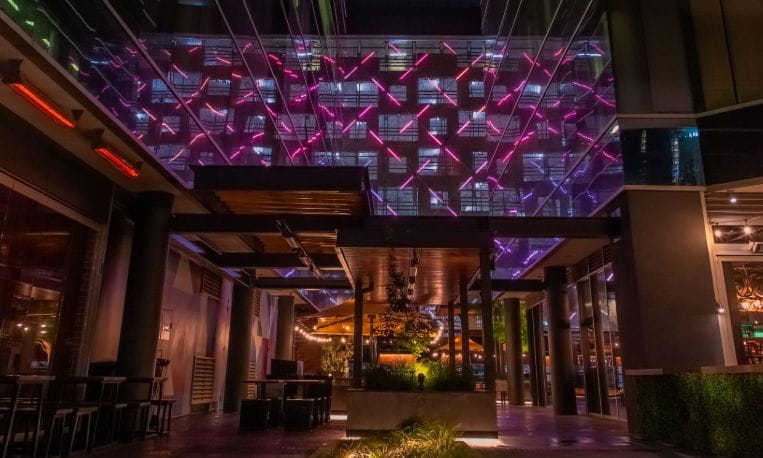
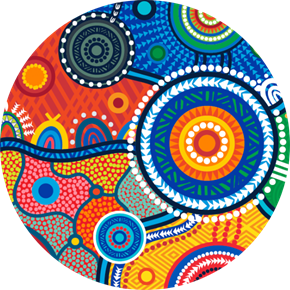
Mirvac acknowledges Aboriginal and Torres Strait Islander peoples as the Traditional Owners of the lands and waters of Australia, and we offer our respect to their Elders past and present.
Artwork: ‘Reimagining Country’, created by Riki Salam (Mualgal, Kaurareg, Kuku Yalanji) of We are 27 Creative.

